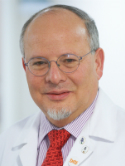| Abstract: |
Primary mediastinal (thymic) large B cell lymphoma is a subtype of diffuse large B cell lymphoma with distinct clinical, molecular, and genetic features, many of which overlap with Hodgkin lymphoma. Increasingly, initial therapy for these patients has used dose-dense chemotherapy with or without radiation with excellent results. In patients with relapsed and primary refractory disease, outcomes of second-line therapy followed by consolidation with high-dose therapy and autologous stem cell transplantation remains largely undefined. We reviewed the outcomes of 60 transplant-eligible patients with relapsed or refractory primary mediastinal (thymic) large B cell lymphoma enrolled on sequential protocols with uniform second-line therapy with intent to consolidate with autologous stem cell transplant. The estimated 3-year overall and event-free survivals for all patients were 61% and 57%, respectively, and 68% and 65%, respectively, for patients proceeding to stem cell transplant. Multivariable analysis of risk factors before transplant revealed that an incomplete response to initial therapy, advanced Ann Arbor stage at disease progression, and failure to achieve a partial remission or better to second-line therapy to be independently associated with inferior event-free and overall survival. A risk score based on these variables was able to identify patients who are unlikely to respond to conventional second-line strategies. These results suggest that salvage chemoradiotherapy with intent of subsequent high-dose therapy and autologous stem cell transplant is successful in most patients with relapsed and refractory primary mediastinal (thymic) large B cell lymphoma. Alternative strategies are warranted for a significant subset of patients with high-risk disease who are unlikely to be cured with this strategy. © 2018 |












